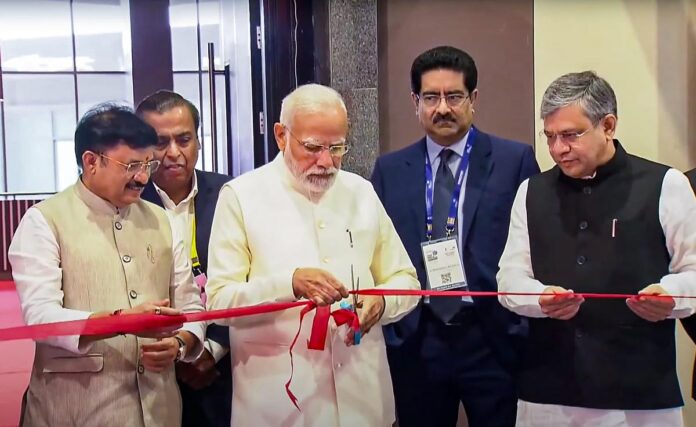New Delhi: Prime Minister Narendra Modi today launched 5G services at the 6th Edition of India Mobile Congress 2022 event. It is a four-day event, which is being held at Pragati Maidan in New Delhi. The wait for 5G in India is finally over and users will be able to enjoy 5G services by Diwali. Several top companies like Airtel, Reliance Jio, and Qualcomm demonstrated their 5G services as well as the benefits of it to PM Narendra Modi.
At the event, he also spent time understanding the indigenous development of end-to-end 5G technology, and how 5G can help bridge the gap between urban and rural healthcare delivery. The latest 5G network will not only offer faster internet speeds to users, but will also help offer support to the government in areas such as disaster management, agriculture, among others.
Reliance Industries’ Chairman, Mukesh Ambani, announced that Jio will ensure to offer “the highest quality and most affordable rates that anyone else has in the world.” The telecom operator is promising to offer 5G to each corner of India by December 2023. Airtel has announced that it will roll out 5G in 8 cities starting today. While the names of all the cities are unknown, the company did confirm that Mumbai, Delhi, Varanasi and Bangalore will get 5G today. Vodafone Idea will also begin 5G roll out soon.
5G will first be rolled out in select metro cities and people will be able to experience 10 times the faster internet speed than 4G. It is said to offer a maximum data transfer speed of up to 20Gbps per second or more than 100Mbps per second. Currently, we get up to 1Gbps speed in 4G. The government has already confirmed that users in India won’t be required to pay a lot for 5G plans and these will be launched at affordable prices.
The major telecom companies like Jio and Airtel will first roll out 5G in four cities, including Delhi, Mumbai, Kolkata, and Chennai. This doesn’t mean that all those who are based in these cities will be able to access 5G in every corner. This will likely take some time, but users in some parts will at least be able to enjoy the 5G network.
It is worth noting that Delhi’s Indira Gandhi international airport is now 5G-ready. So, people will soon be able to experience faster speeds at the airport. Airtel, Jio and Vodafone Idea are expected to reveal 5G plans prices in the coming weeks.
What are the differences between the previous generations of mobile networks and 5G?
A: The previous generations of mobile networks are 1G, 2G, 3G, and 4G.
First generation – 1G
1980s: 1G delivered analog voice.
Second generation – 2G
Early 1990s: 2G introduced digital voice (e.g. CDMA- Code Division Multiple Access).
Third generation – 3G
Early 2000s: 3G brought mobile data (e.g. CDMA2000).
Fourth generation – 4G LTE
2010s: 4G LTE ushered in the era of mobile broadband.
1G, 2G, 3G, and 4G all led to 5G, which is designed to provide more connectivity than was ever available before.
5G is a unified, more capable air interface. It has been designed with an extended capacity to enable next-generation user experiences, empower new deployment models and deliver new services.
With high speeds, superior reliability and negligible latency, 5G will expand the mobile ecosystem into new realms. 5G will impact every industry, making safer transportation, remote healthcare, precision agriculture, digitized logistics — and more — a reality.








